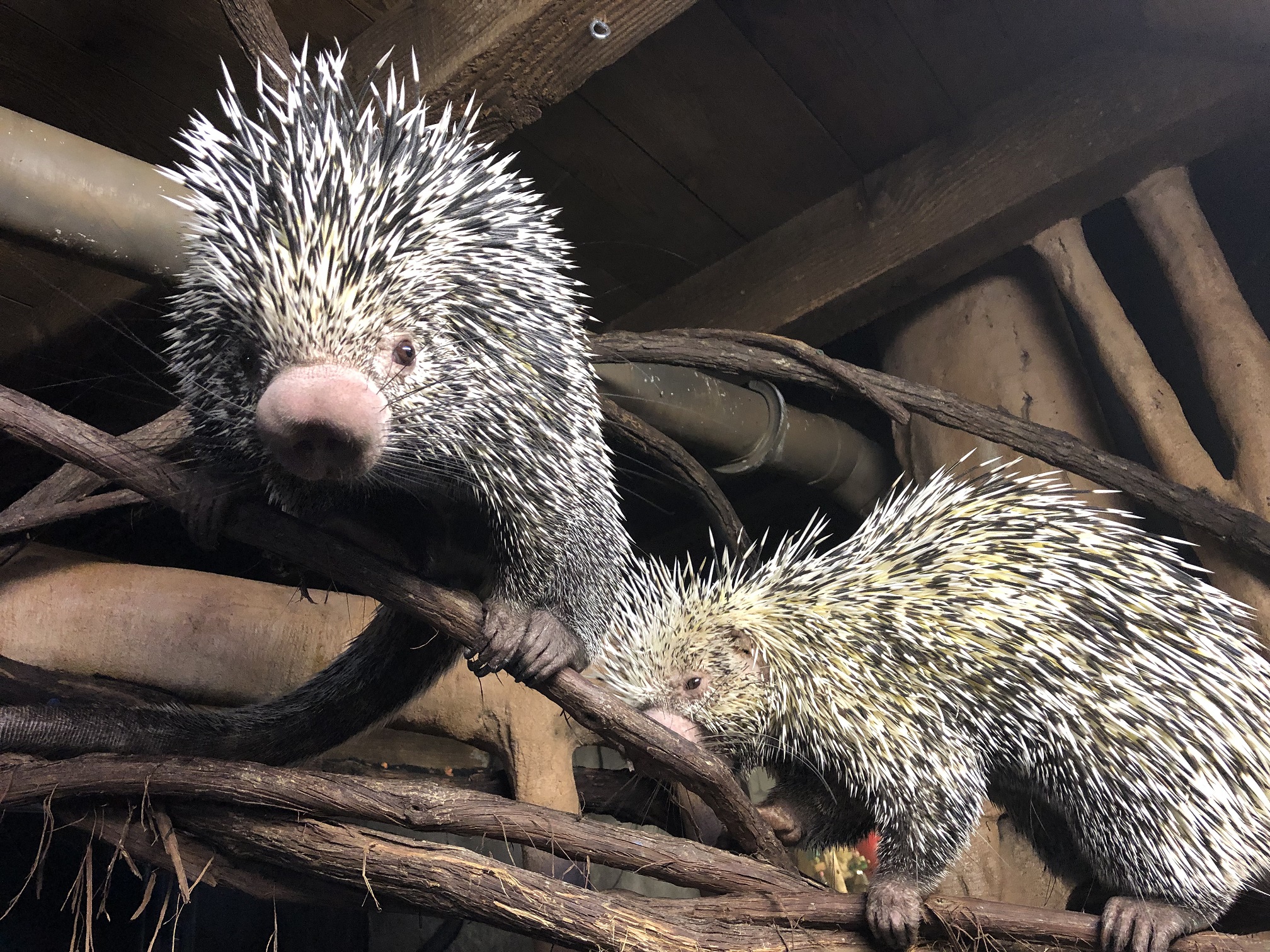With sharp spines, a big, round nose, and a tail they can hang from, prehensile-tailed (or Brazilian) porcupines are nocturnal vegetarian rodents. They have short, thick spines, and their body color runs from yellowish to an orange-rust to brown to almost black. They weigh 4 to 11 pounds. Their bodies are 12 to 24 inches long, and their tails are almost as long as their bodies, adding another 10 to 20 inches. These porcupines use their prehensile tails for grasping and hanging.
Prehensile-tailed porcupines are not well studied in the wild because they stay high in trees, are slow moving and are largely immobile during the day – all of which makes them difficult to stop.
At night, they move around – slowly – foraging for food in treetops. Despite their lack of speed, they are surprisingly agile and climb quickly when necessary.
They cannot jump or throw their quills (no porcupine can!), but their quills detach easily when touched and can even embed themselves into their enemy’s skin. These defense are so formidable that porcupines have a longer lifespan and a slower reproductive rate than many other rodents.
When excited, these porcupines stamp their hind feet and shake their backsides.
When they are born, Brazilian porcupines are covered with red hair and soft quills which harden over time. They live in tropical rainforest trees of Venezuela, Guiana, Brazil, Bolivia, Paraguay, Trinidad, and some extreme northern sections of Argentina, rarely descending to the forest floor.
They eat leaves, stems, flowers, shoots, roots and the cambium layer found beneath the bark of some trees.
Some ways that you can help prehensile tailed porcupines and other animals who reside in the central and south American forests is:
- By using shade grown coffee. Destruction of forests in habitat range has been influenced by several developments of human encroachment but one in particular is coffee plants. Once coffee became a popular beverage for many, many strains were modified over time to be able to withstand sunlight, while many original coffee plants that were cultivated could not withstand much sunlight and were therefore grown beneath the canopy of the forest. Due to this modification, farmers are creating coffee plantations for larger product, contributing to deforestation of these areas. A way to make sure you are not contributing to these companies is while you purchase coffee for your own home, look for the Rainforest alliance certified brands. They will have a tree frog stamp on the package and you will be able to know that you are not contributing to habitat destruction or many forest dwelling animals.
- By reducing, reusing and recycling all your paper and paper products.
- By removing or reducing single use plastics, such as water bottles and straws.
